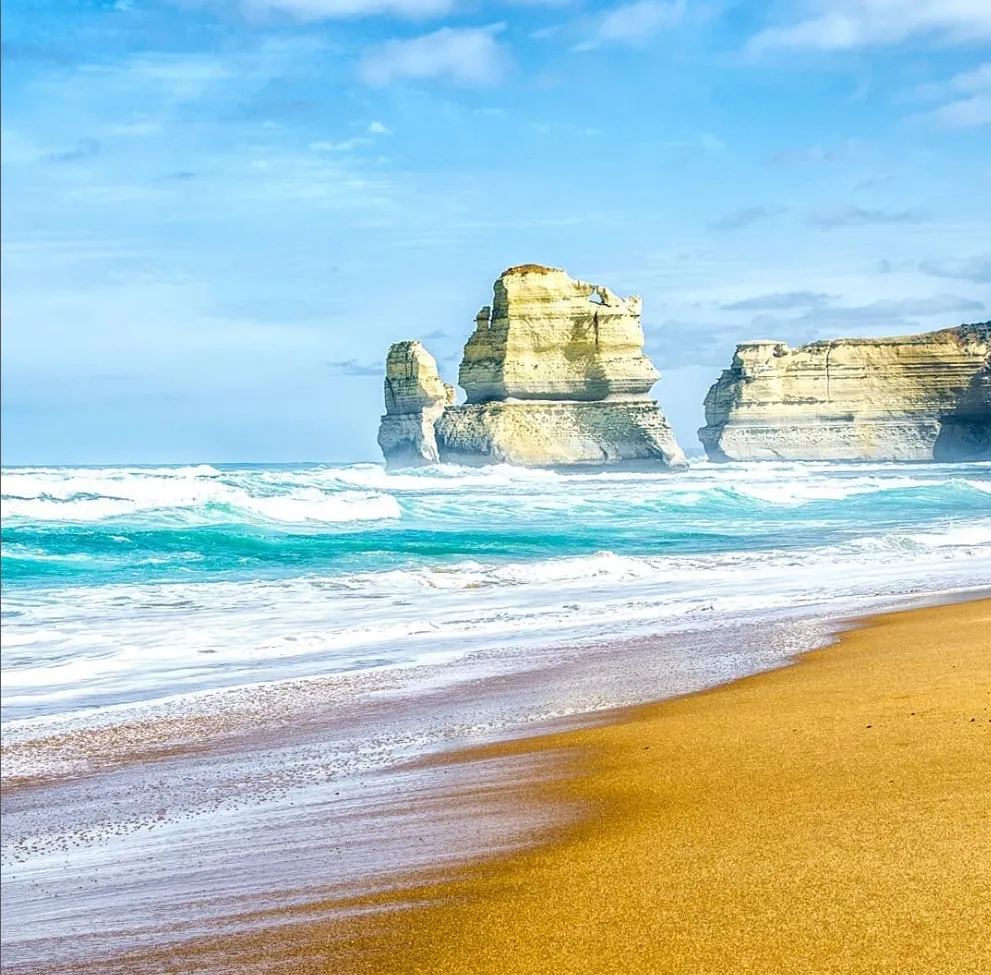
The celebrated Australian landmark, the Great Ocean Road, stretching for 240 kilometres along the southeast coast, is known for its picturesque coastal environment and natural beauty. This iconic route including notable sites like Bells Beach and Apollo Bay is becoming more vulnerable to climate change. In this article we look at how climate change affects this important region with a focus on environmental concerns and strategic planning and management in order to mitigate these impacts.
Importance of Coastal Reserves and National Parks

Coastal reserves such as Port Campbell National Park and Great Otway National Park are part of the Great Ocean Road. These reserves provide vital protection of the unique natural environment and biodiversity found within the area. Coastal reserves play a significant role in the preservation of coastal habitats’ integrity as well as providing important services such as erosion control or water filtration. Ensuring that these areas remain protected from climate change impacts is critical to maintaining coastal values and natural assets of this region.
Unique Biodiversity in Coastal Towns

Beside Great Ocean road lies some coastal towns like Apollo Bay, which has a rich biodiversity consisting of different species existing between forested landscapes and tidal marshes. This area is also home to various kinds of flora and fauna, which include eastern grey kangaroos, koala bears as well as sea birds, among others, contributing towards their habitat’s healthiness as well as traditional values derived from them. Nonetheless, global warming threatens this biodiversity due to loss of habitat, increase in heat levels above normalcy, plus patterns that are changing rainfalls, hence affecting breeding grounds & mortality rates for local animals.
Understanding Climate Change Impacts

Climate change impacts are evident along the Great Ocean Road now more than ever before. Key factors include elevated oceanic temperatures, increased acidification of oceans, changes in rainfall patterns. Acidification due to ocean acidification results into major variations occurring within marine ecosystems thereby further affecting adjacent coastlines alongside changing water quality characteristics when viewed together with flooding caused by rising sea levels. In addition, the area suffers from dry spells and extreme heat that worsen local ecosystem and community problems.
Role of Marine Environments in Ecosystems

Marine environments form an essential part of Great Ocean Road’s balanced ecology. These marine habitats provide a home for diverse marine species, contribute towards local fisheries’ economic value as well as enhance natural landscapes. Coastal wetlands and low-lying wetlands provide important roles such as water filtration or many other kinds of animal’ sheltering purposes. The preservation of marine environments is crucial to retaining coastal values and ensuring sustainable tourism through economic activities in coastal towns.
Changes in Rainfall Patterns
Rainfall patterns have changed significantly along the Great Ocean Road due to climate change. Intense rainfall events are now more frequent leading to increased riverine flooding plus floodplain inundation near shores. For instance, the quality of water is at stake with regards to these occurrences thus heightening coastal perils related to erosion mainly due to oceanic surge or even landslides occurring along beaches especially on the steep slopes found within the region. This demands a uniform approach to land-use planning and its integration into coastal planning in order to mitigate this impacts while conserving the natural heritage and cultural heritages in this region.
Rising Ocean Temperatures

The increasing ocean temperatures are another major impact of climate change on the Great Ocean Road. High ocean temperatures can lead to coral bleaching, changes in distributional patterns among marine species as well as impacting on marine ecosystems. Warming up ocean waters also has consequences on overall healthiness of coastal sites together with economic aspects tied up with fish farming businesses & tourist activities carried out in these places.
More Acidic Ocean
Ocean acidification, due to elevated levels of CO2 in the atmosphere is affecting marine environments along Great Ocean Road. It results in increased acidity, which can be detrimental to marine life, specifically those organisms with calcium carbonate shells including shellfish and corals. This change affects not only coastal habitats but also the larger ecosystem.
Implications for Water Quality
Climate change effects such as high temperatures and increased rainfall are impacting on water quality along this road. Changes in the pattern of precipitation may lead to more runoff and pollution in these areas thereby making them unhealthy for human beings and animals that rely on them for their habitat. Proper maintenance of high water quality standards ensures survival of diverse species found in various ecosystems.
Climate Change Effects on Coastal Hazards
There are a number of coastal hazards that cause climate change to worsen, such as erosion on beaches, cliff erosion, and landslides. Rising sea levels, added to the heightened frequency of severe weather events, elevate the vulnerability of coastal features and infrastructure within this region. To mitigate such risks and preserve its built environment together with natural elements, coastal hazard assessments and climate adaptation strategies have to be combined.
Beach Erosion
An increase in both sea-level rise and storm intensity contributes towards rapid beach erosion. The process tends to remove beach material leaving behind bare areas; it may also cause damage destructions thus disrupting local ecosystems.
Cliff Erosion
The cliffs along Great Ocean Road are subject to potential erosion compared to other parts. Rainfall intensities have increased, as well as an upsurge in ocean water level, leading to undermining rock faces resulting from sliding landslips, hence the loss of some spectacular seaside formations.
Landslides
Moving forward, land slides become major issue when it comes to enhancing resilience within the coastlines affected by global warming effects. Landslides can happen due to heavy rains or unstable soils causing harm both on human settlements as well as natural sceneries.
Preservation of Tourism in Coastal Towns

Coastal towns adjacent to Great Ocean Road rely on tourism as the mainstay of their economies. On the other hand, the maintenance of this commerce calls for a careful balance between promoting tourism and preserving it. So as to keep culture and natural beauty intact together with sound strategic planning ideas, systems should be put in place that incorporate use of empirical data for decision making and sustainable visiting procedures.
‘Prevention Is Better Than The Cure’
Taking proactive measures towards fighting climate change impacts is necessary for safeguarding Great Ocean Road. Prevention can moderate harmful effects associated with global warming upon the environment as well as local communities resulting into early intervention methods. These may involve action plans; coastal monitoring programs as well as conservations projects meant to safeguard sea shores from further degradation thus enhancing their resilience.
Conclusion
The Great Ocean road is Australia’s most valuable asset both in terms of nature and culture but is under severe threat due to climate change. Addressing all these challenges requires collective efforts from various stakeholders such local communities, management authorities like Parks Victoria, and strategic plans framework among others. There will be continuity in preserving this iconic area through understanding climate change impacts and reducing them accordingly for future generations.
If you want to see the Great Ocean Road and do not want to harm this fragile ecosystem, we recommend joining the organized Great Ocean Road one day tour. On this tour, you will be met by experienced guides and shown the most interesting places, as well as hear stories about how to protect nature.
FAQs
How does climate change affect Great Ocean Road?
Climate changes cause effects like increasing ocean temperatures, high ocean acidity, changing rainfall patterns, widespread erosion among others in coastal regions. Such transformations put regional marine wildlife diversity at stake while also affecting water quality conditions.
Do reserves and parks help fight against climate change?
Across its coastlines, there are several ecologically significant places including protected areas such as national parks or some particular beaches where wild animals freely roam about. Basically located within these geographical boundaries are forested habitats that serve various purposes just like erosion control while maintaining biological richness here because they foster adaptability towards climatic changes within this locality.
How might coastal towns brace for climate change?
Implementing coastal hazard assessments, strategic land-use planning and conservation initiatives are some of the adaptation strategies. In addition, there is a role played in building resilience through sustainable tourism practices and community infrastructure improvements.
What coastal hazards become more severe with climate change?
Climate change aggravates beach erosion as well as cliff erosion, landslides and coastal flooding which are major coastal hazards. Such threats are made worse by rising sea levels and an increase in the occurrence of extreme weather events.
Why does evidence matter in managing climate impacts?
Evidence based decision making ensures that actions and policies are guided by the best available information and scientific understanding. This approach is helpful in developing effective strategies to mitigate the impacts of climate change on protecting our coastlines.


